It looks like you're using an Ad Blocker.
Please white-list or disable AboveTopSecret.com in your ad-blocking tool.
Thank you.
Some features of ATS will be disabled while you continue to use an ad-blocker.
25
share:
We've all heard the old saying that a picture is worth a thousand words... That saying sticks with us because it is simply a very poignant fact.
Whether a photo was snapped, a realistic sketch found life on an errant napkin, or a canvas was used as a mirror... That saying remains consistent and
true throughout all mediums used. It captures a moment in time for the rest of time.
I am sharing with you a group of self portraits done by William Utermohlen in an attempt to document Alzheimer's and it's gradual theft of his memories and in turn... his life.
Alzheimer's is very much like cancer in the sense that you would be hard pressed to name anyone that has not been touched in some way by this disease. Most of us have had to witness it first hand with parents and grandparents alike. There is no way to adequately describe what it is like to watch someone literally be robbed of every memory they have ever had. No way to describe what it's like when a parent no longer sees you as their child. Words can't encompass the feelings it causes within you to witness understanding, and comprehension slowly slip out of someone's eyes until one day you look and nobody is home.
There's no recognition there. The look of vacancy is utterly heart breaking.
In these pictures you will see how the artist's perception of himself declines further and further until his last self portraits match many advanced Alzheimer's patient's eyes... The whole face is vacant - literally.
This first picture was a self portrait William did in 1967. He did not have Alzheimer's at this point. He was diagnosed in 1995.

This picture is a self portrait done right after William's diagnosis titled Blue Skies.

This self portrait was done in 1996...One year after William's initial diagnosis. It's titled Yellow and Green
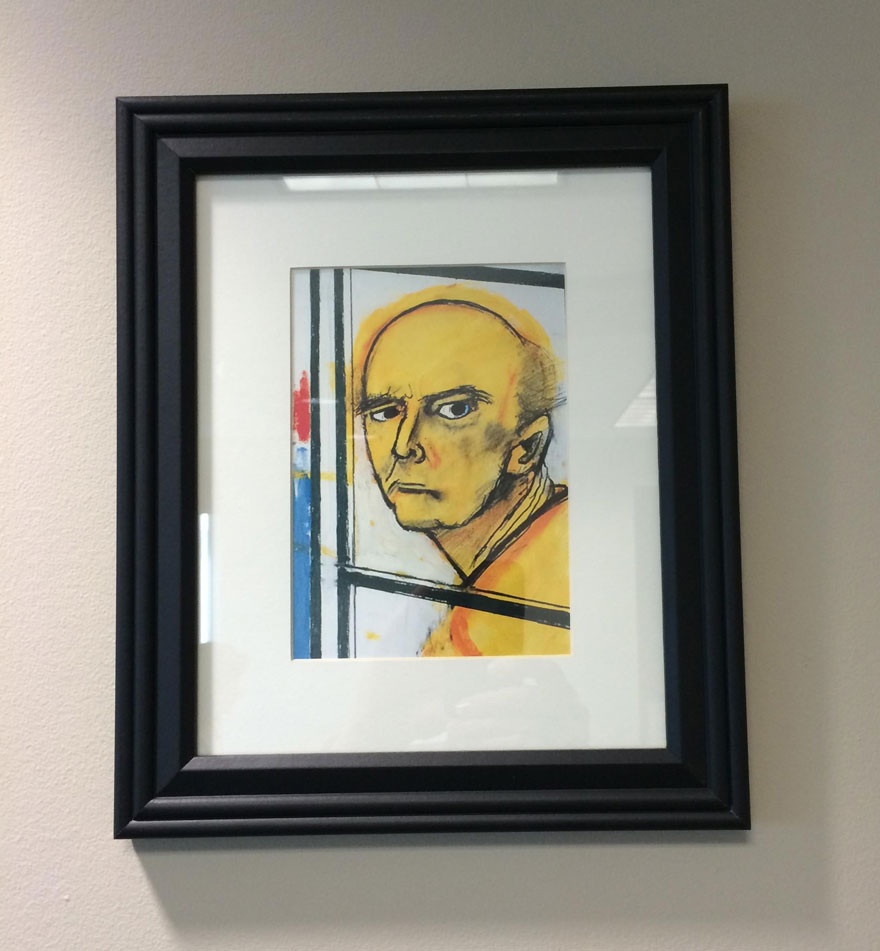
Another portrait from 1996 simply titled Red...

These two self portraits were done in 1997. The first is titled Saw. The second is titled Green.
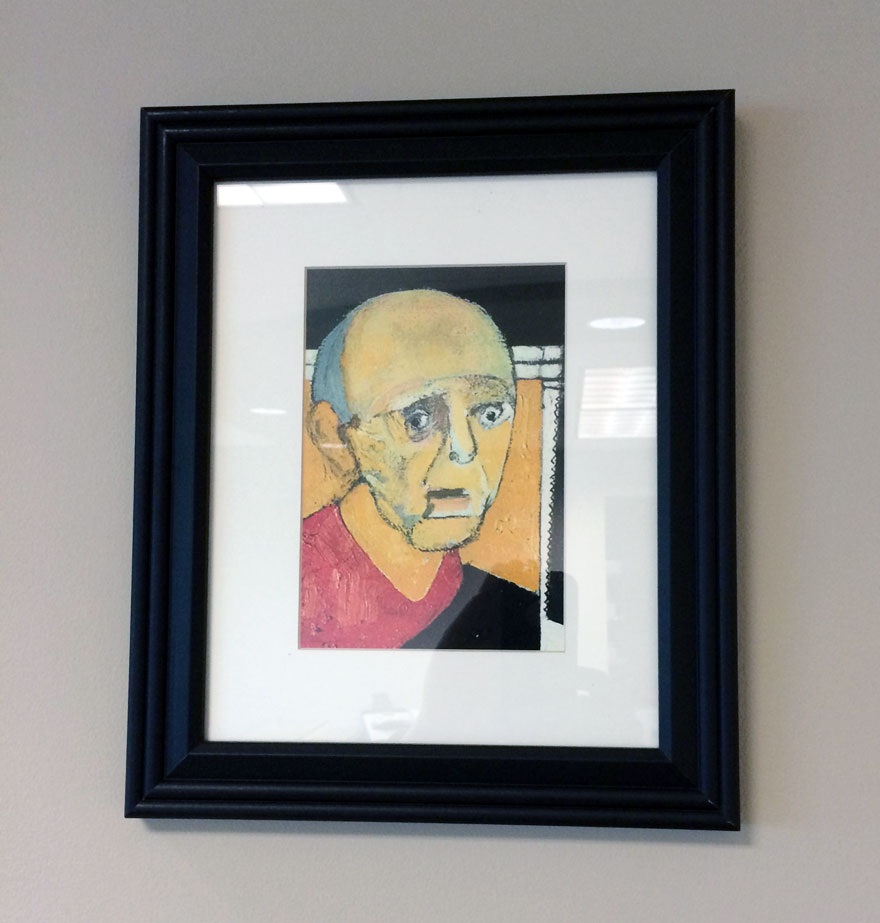
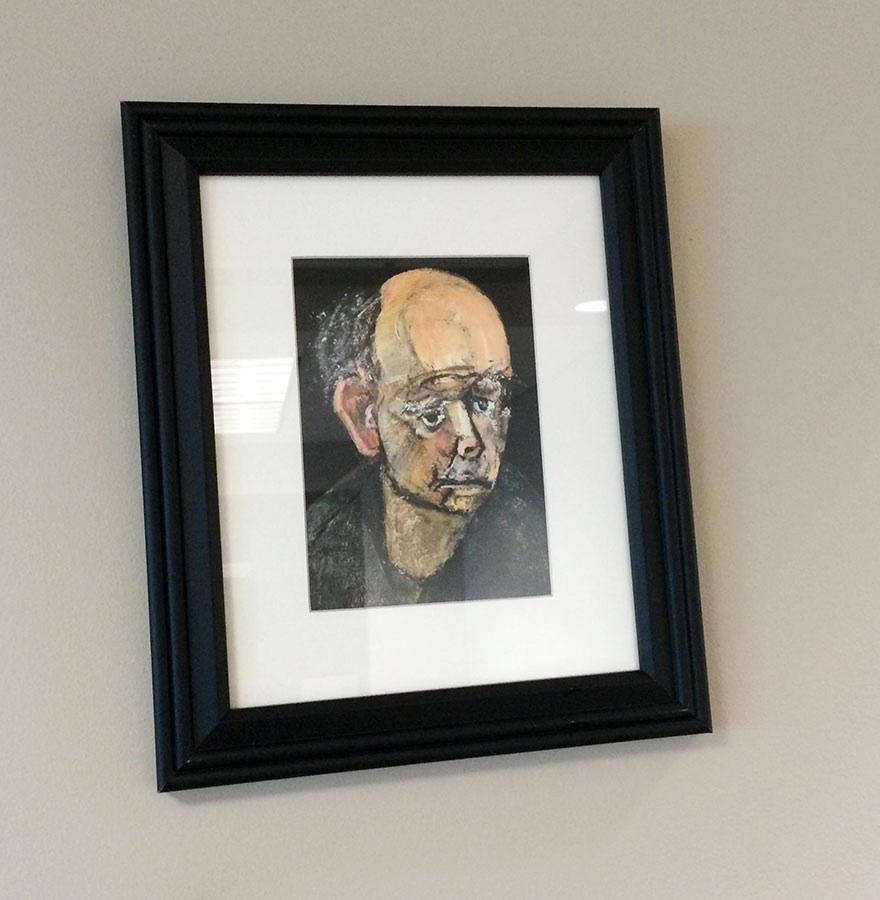
This portrait was done in 1998.
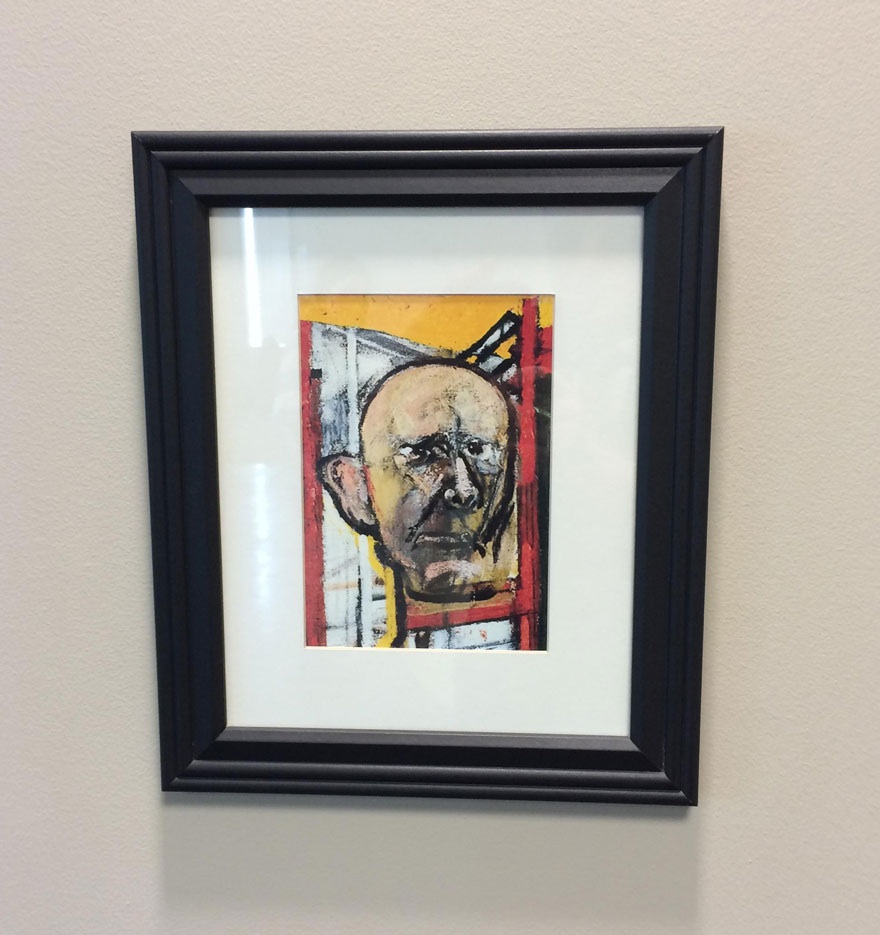
This self portrait was done in 1999.
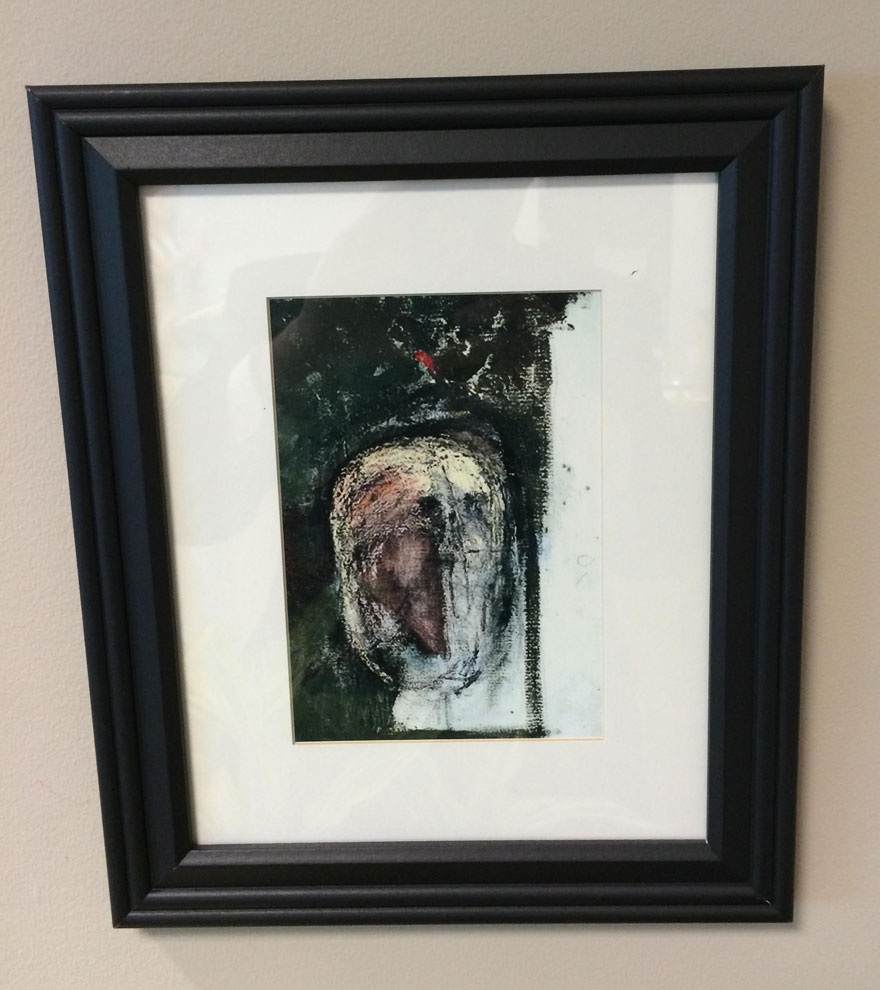
Lastly we have the final self portrait Bill ever did in 2000 titled Head. It's quite haunting to look at when you know the whole story behind this entire series of self portraits.
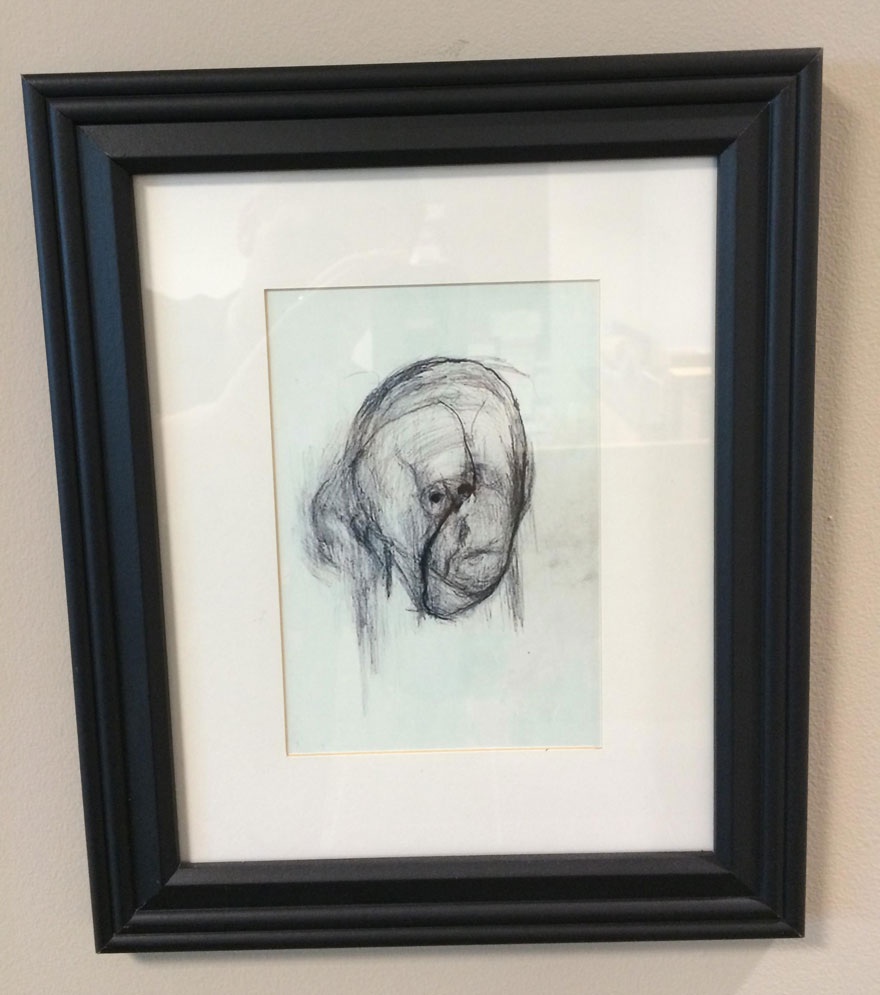
It's interesting and sad to watch the decline William went through portrayed in his self portraits. It gives us a totally new way to look at this awful disease and what may be going on inside the minds who suffer from it.
I did not include all of the descriptions of these paintings as it's against T&C's to copy and paste I everything. You can find all of the descriptions of Bill's self portraits at this link :
www.myriad.com...
I found the original article here:
www.boredpanda.com...
I am sharing with you a group of self portraits done by William Utermohlen in an attempt to document Alzheimer's and it's gradual theft of his memories and in turn... his life.
Alzheimer's is very much like cancer in the sense that you would be hard pressed to name anyone that has not been touched in some way by this disease. Most of us have had to witness it first hand with parents and grandparents alike. There is no way to adequately describe what it is like to watch someone literally be robbed of every memory they have ever had. No way to describe what it's like when a parent no longer sees you as their child. Words can't encompass the feelings it causes within you to witness understanding, and comprehension slowly slip out of someone's eyes until one day you look and nobody is home.
There's no recognition there. The look of vacancy is utterly heart breaking.
In these pictures you will see how the artist's perception of himself declines further and further until his last self portraits match many advanced Alzheimer's patient's eyes... The whole face is vacant - literally.
In 1995, U.K.-based artist William Utermohlen was diagnosed with Alzheimer’s disease. This is a difficult diagnosis and disease for anyone, but before his death in 2007, Utermohlen created a heart-wrenching final series of self-portraits over a roughly 5-year period documenting the gradual decay of his mind due to this crippling disease.
An essay by the artist’s widow Patricia explains perfectly exactly why these images are so powerful; “In these pictures we see with heart-breaking intensity William’s efforts to explain his altered self, his fears and his sadness.” It’s hard to say whether the changes in his portraits came about due the loss of his artistic skills or due to changes in his psyche but, in either case, they document the emotional turmoil of an artist watching his mind slip away from him bit by bit.
This first picture was a self portrait William did in 1967. He did not have Alzheimer's at this point. He was diagnosed in 1995.

This picture is a self portrait done right after William's diagnosis titled Blue Skies.

In Blue Skies the artist bears witness to the announcement of his illness and his impending decline. The diagnosis of this psychic death, occurring before real death, produces a deep dread. The worst is confirmed, the end is now inexorable.
What is shown in Blue Skies is a key moment and a crossroads, beyond which the framework of the self dissolves. The will to live tips over and freezes like the studio skylight suspended above the artist in the picture. Time has stopped. Space is laid bare. Life opens to the steely blue emptiness of a dreadful future—an obliterating hole poised above ready to suck him in.
In order not to be engulfed by the darkness, he hangs onto the table like a shipwrecked man onto his raft, or like a painter holding onto his canvas. In order to survive, he must be able to capture this catastrophic moment; he must depict the unspeakable.
Rarely has a painting spoken so clearly of the ending of psychic life and the desperate effort to continue to exist by continuing to depict the world.
This self portrait was done in 1996...One year after William's initial diagnosis. It's titled Yellow and Green

To paint oneself is a way of marking continuity and the passing of time. This self-portrait attempts to fix an image of the self, to regain his experience of being present, and to fill the ever- increasing gap that now separates the artist from his old self and his environment.
Here, Bill bears witness to his experience of living with Alzheimer’s disease and, through his work, we witness the poignant truth he shares with us—that the world has shrunk and he peers through it, as if trapped behind prison bars.
Another portrait from 1996 simply titled Red...

It is with great anguish that Bill watches himself disappear little by little every day. The artist mourns his lost self. His look is empty of all hope, the center of his pupil a blind spot. His reflection is coming apart and he can’t put himself back together. The double in the mirror sends back a negative, a death-carrying image that he had hoped to escape. He has become a shadow of his old self and only the clothes floating on the ghostly body still show the bright colors of life.
These two self portraits were done in 1997. The first is titled Saw. The second is titled Green.

In 1997, Bill learns that only at autopsy will his doctors be able to definitely diagnose his Alzheimer's disease. This notion haunts him and he speaks of it constantly to those close to him.

Two years after his diagnosis, the self portraits are now distinctly different. Forms are more blurred. Motivation, attention, memory and visual recognition are now disorganized and render all tasks uncertain and awkward. The artist now paints as if groping.
This portrait was done in 1998.

This self portrait was done in 1999.

Lastly we have the final self portrait Bill ever did in 2000 titled Head. It's quite haunting to look at when you know the whole story behind this entire series of self portraits.

Five years after Bill's diagnosis, time has become no more than a sequence of instants. The head is drawn and erased at the same time - dismantled as it is being structured. It is almost as if the artist has assimilated his drawings with his destiny. To subsist While disappearing.
It's interesting and sad to watch the decline William went through portrayed in his self portraits. It gives us a totally new way to look at this awful disease and what may be going on inside the minds who suffer from it.
I did not include all of the descriptions of these paintings as it's against T&C's to copy and paste I everything. You can find all of the descriptions of Bill's self portraits at this link :
www.myriad.com...
I found the original article here:
www.boredpanda.com...
edit on 8/31/2014 by Kangaruex4Ewe because: (no reason
given)
a reply to: Kangaruex4Ewe
Kanga, this is truly sad. This is a terrible disease to all it touches...... A very touching Thread. Syx.
Kanga, this is truly sad. This is a terrible disease to all it touches...... A very touching Thread. Syx.
originally posted by: SyxPak
a reply to: Kangaruex4Ewe
Kanga, this is truly sad. This is a terrible disease to all it touches...... A very touching Thread. Syx.
I agree. It's beyond sad. The only blessing this disease has, is that the people who suffer from it do not suffer physically like one would with cancer or the like. The suffering is usually all done by the loved ones and family members of those with Alzheimer's. It's hard to lose someone while they are still here. That's the best way I can think of to put it.
Hopefully one day they will find a way to stop Alzheimer's in it's tracks. They've made some progress in terms of being able to slow some of it down, but I would like to see it completely eradicated like so many others. I suppose we will have to keep our fingers crossed on further research findings.
a reply to: Kangaruex4Ewe
It seems that in some areas leaps and bounds happen as far as research.
Let's hope this field will progress at a fast pace as well......
It seems that in some areas leaps and bounds happen as far as research.
Let's hope this field will progress at a fast pace as well......
a reply to: Kangaruex4Ewe
One of the greatest amounts of pain and suffering I've witnessed in a person has been Alzheimer's, you're right that the family and loved ones are usually the ones doing the most suffering, usually.
However, in the early stages of the disease, the distress of knowing that the only thing in front of you is a blackened abyss coming to erode your mind is constantly in front of some, often brought about by the corrections others make in regard to your lapses in memory.
Knowing there's nothing you can do to stop it...knowing you'll soon be trapped in a nightmarish limbo between death and life.
It. Is. Horror.
One of the greatest amounts of pain and suffering I've witnessed in a person has been Alzheimer's, you're right that the family and loved ones are usually the ones doing the most suffering, usually.
However, in the early stages of the disease, the distress of knowing that the only thing in front of you is a blackened abyss coming to erode your mind is constantly in front of some, often brought about by the corrections others make in regard to your lapses in memory.
Knowing there's nothing you can do to stop it...knowing you'll soon be trapped in a nightmarish limbo between death and life.
It. Is. Horror.
a reply to: TurtleSmacker
That's why I specified that they did not suffer "physically" in my OP. I know that in the beginning stages they suffer greatly mentally. It is a scary concept if you are faced with it. You don't know how you will wind up and that is a huge mental burden. But as they slip away into themselves they are generally at peace, while the family watches in anguish.
It's definitely an ugly disease. I, in no way meant to make it sound like it was a cakewalk for those who have been diagnosed with it. I've seen it more times than I'd like to and it is a nightmare no doubt.
That's why I specified that they did not suffer "physically" in my OP. I know that in the beginning stages they suffer greatly mentally. It is a scary concept if you are faced with it. You don't know how you will wind up and that is a huge mental burden. But as they slip away into themselves they are generally at peace, while the family watches in anguish.
It's definitely an ugly disease. I, in no way meant to make it sound like it was a cakewalk for those who have been diagnosed with it. I've seen it more times than I'd like to and it is a nightmare no doubt.
It really upsets me seeing old folk with dementia etc.
I worked in a place looking after them and saw the confusion they have.
One old lad (89) came out of his room with just his cane and underpants on trying to get outside in the middle of the night, I asked him why he needed to go outside and he told me he is late for school and the headmaster was going to cane him. I asked him how old he was and he said "14" only after I showed himself in the mirror did he remember he was 89.
Loved that dude I was next to him when he passed telling the corner of the room (He saw his wife) that he was coming and he loved her...then he just passed away .
I was given his walking cane by his family and plan to use it when I get as old as he.
I really hope we find a cure to this terrible illness and the paintings go to show the deterioration of the mind .
I worked in a place looking after them and saw the confusion they have.
One old lad (89) came out of his room with just his cane and underpants on trying to get outside in the middle of the night, I asked him why he needed to go outside and he told me he is late for school and the headmaster was going to cane him. I asked him how old he was and he said "14" only after I showed himself in the mirror did he remember he was 89.
Loved that dude I was next to him when he passed telling the corner of the room (He saw his wife) that he was coming and he loved her...then he just passed away .
I was given his walking cane by his family and plan to use it when I get as old as he.
I really hope we find a cure to this terrible illness and the paintings go to show the deterioration of the mind .
a reply to: Kangaruex4Ewe
Another great thread and what an thought-provoking one. Selfishly I hope I don't get it or my kids but I do worry for my wife as her Mother got it shortly after a sister developed it literally over night - she went from being herself one night and waking up only being "half herself" and then then the following morning being none of herself - it was so distressing for her husband and kids. Her mother made a slower decline into the disease but the effect was exactly the same.
Another great thread and what an thought-provoking one. Selfishly I hope I don't get it or my kids but I do worry for my wife as her Mother got it shortly after a sister developed it literally over night - she went from being herself one night and waking up only being "half herself" and then then the following morning being none of herself - it was so distressing for her husband and kids. Her mother made a slower decline into the disease but the effect was exactly the same.
a reply to: Kangaruex4Ewe
Indeed, I just wanted to underline what this poor fellow must have been suffering through, didn't mean to come off as if I thought you were trying to downplay it, simply wanted to emphasise the insidiousness of it further.
Truly a disease that can use any raising of awareness, reasearch, and fundraising, no-one should have to pray for the end years before it comes.
Indeed, I just wanted to underline what this poor fellow must have been suffering through, didn't mean to come off as if I thought you were trying to downplay it, simply wanted to emphasise the insidiousness of it further.
Truly a disease that can use any raising of awareness, reasearch, and fundraising, no-one should have to pray for the end years before it comes.
a reply to: Kangaruex4Ewe
This is one of the worst diseases imaginable as far as I'm concerned. I can attest first hand as it took my spouse over a period of 7-8 years and left nothing but devastation in it's path.
From what I've been reading it also appears to be almost at epidemic levels and seems to be getting even worse. If a cure or prevention is not found soon.. well, I don't know what but it won't be good.
Edit
Not sure I believe that. Physical suffering also includes loss of motor skills. Maybe just not pain though.
This is one of the worst diseases imaginable as far as I'm concerned. I can attest first hand as it took my spouse over a period of 7-8 years and left nothing but devastation in it's path.
From what I've been reading it also appears to be almost at epidemic levels and seems to be getting even worse. If a cure or prevention is not found soon.. well, I don't know what but it won't be good.
Edit
That's why I specified that they did not suffer "physically" in my OP.
Not sure I believe that. Physical suffering also includes loss of motor skills. Maybe just not pain though.
edit on 553am4747am72014 by Bassago because: (no reason given)
I appreciate you posting this. Just before checking ATS, I had just emailed my sister telling her I think Mom is showing some of the first signs of
Alzheimer's. My Grandmother had it and its disturbing and heart breaking to see the deterioration of someone you love.
There are drugs they have now that drastically slow down some forms a dementia, but it doesn't bring back the lost memories.
There are drugs they have now that drastically slow down some forms a dementia, but it doesn't bring back the lost memories.
a reply to: Kangaruex4Ewe
My personal experience with it was like seeing someone trapped in a thick fog, they tried to find a way out of the fog but it just became deeper and deeper.
It breaks your heart at the beginning when you see them struggling to hold on to memories as they slip through their fingers.
Eventually they forget themselves even.
My personal experience with it was like seeing someone trapped in a thick fog, they tried to find a way out of the fog but it just became deeper and deeper.
It breaks your heart at the beginning when you see them struggling to hold on to memories as they slip through their fingers.
Eventually they forget themselves even.
My mother has m.s, has had it for a bit over 30 years. Much in the same way as someone with Alzheimers loses ones self so has she. She went from
becoming the energetic person to being confined to a scooter and not remembering things. Both horrible diseases to witness with a lot of
similarities... S&F
a reply to: boymonkey74
I have had a few family members that had to be put into rehab/nursing home facilities and I can only say that I admire anyone who can commit to and do that job daily with all of their heart. Those are such sad places for so many and anyone that has even had to walk down the hall of one knows what we're talking about. Knowing that someone is there (like you) to care for a family member during those times means so much to so many people.
I am glad that this man's family showed their appreciation to you the way they did. I also hope that you never have to use that cane unless you are just trying to be dapper on an evening out. But if you do, I know that you will always appreciate where it came from and how it became yours.
I think we will one day be able to halt Alzheimer's in it's tracks, but there will still be too many lost to it until that day comes and that is a tragedy for all.
I think we a all that selfish Shiloh. I know that I am. It is astonishing how fast it comes on in some patients. Like you said... I have seen it happen almost overnight and other times I have seen it take years to steal away the memories and life of others. There's really no ryhme or reason for the drastic differences as far as I can tell. It seems to be just the luck of the draw and that makes it even more scary IMO.
I think a lot of us have a fear of this as we age. Nobody is safe and nobody wants to be a burden on others. It's a terrible thing.
My sincere condolences go out to you before I say anything else. I can't imagine how heartbreaking it is to see a spouse taken this way. To wake up every day and care for them (until you no longer can) and have them not even know who you are at times or at all depending on the stage... Has certainly got to be utterly devastating. I am sorry that you had to live it first hand.
It does seem to be reaching epic proportions and I am not sure if that is because we have increased our life expectancies and our minds just can't keep up or if it has something to do with more pollution, medications, chemicals, etc. maybe even a combination of all those things are what is behind it, but like you, we need to devote more time to trying to find a cure because there are just too many people losing this battle.
I am sorry to hear that. Truly. I lost my father almost a month ago and I have been watching my mother closely since. She has always been forgetful, but now you wonder if it isn't more than that. I know how you feel all too well. I catch myself telling myself that she is just more forgetful because of all the stress lately, or from lack of sleep, etc. But then I am wondering if that is the actual truth or the truth as I want it to be. So far I can't tell as weird as that sounds.
I hope that if your mother is in the beginning stages then you can get her help and stop the progression. Like you said... It doesn't bring memories back but at least she will still remember you even if she can't remember your 3rd birthday. But hopefully it can just be chalked up to getting older and the memory getting weaker as opposed to Alzheimer's... For both of us.
I have had a few family members that had to be put into rehab/nursing home facilities and I can only say that I admire anyone who can commit to and do that job daily with all of their heart. Those are such sad places for so many and anyone that has even had to walk down the hall of one knows what we're talking about. Knowing that someone is there (like you) to care for a family member during those times means so much to so many people.
I am glad that this man's family showed their appreciation to you the way they did. I also hope that you never have to use that cane unless you are just trying to be dapper on an evening out. But if you do, I know that you will always appreciate where it came from and how it became yours.
I think we will one day be able to halt Alzheimer's in it's tracks, but there will still be too many lost to it until that day comes and that is a tragedy for all.
originally posted by: Shiloh7
a reply to: Kangaruex4Ewe
Another great thread and what an thought-provoking one. Selfishly I hope I don't get it or my kids but I do worry for my wife as her Mother got it shortly after a sister developed it literally over night - she went from being herself one night and waking up only being "half herself" and then then the following morning being none of herself - it was so distressing for her husband and kids. Her mother made a slower decline into the disease but the effect was exactly the same.
I think we a all that selfish Shiloh. I know that I am. It is astonishing how fast it comes on in some patients. Like you said... I have seen it happen almost overnight and other times I have seen it take years to steal away the memories and life of others. There's really no ryhme or reason for the drastic differences as far as I can tell. It seems to be just the luck of the draw and that makes it even more scary IMO.
I think a lot of us have a fear of this as we age. Nobody is safe and nobody wants to be a burden on others. It's a terrible thing.
originally posted by: Bassago
a reply to: Kangaruex4Ewe
This is one of the worst diseases imaginable as far as I'm concerned. I can attest first hand as it took my spouse over a period of 7-8 years and left nothing but devastation in it's path.
From what I've been reading it also appears to be almost at epidemic levels and seems to be getting even worse. If a cure or prevention is not found soon.. well, I don't know what but it won't be good.
Edit
That's why I specified that they did not suffer "physically" in my OP.
Not sure I believe that. Physical suffering also includes loss of motor skills. Maybe just not pain though.
My sincere condolences go out to you before I say anything else. I can't imagine how heartbreaking it is to see a spouse taken this way. To wake up every day and care for them (until you no longer can) and have them not even know who you are at times or at all depending on the stage... Has certainly got to be utterly devastating. I am sorry that you had to live it first hand.
It does seem to be reaching epic proportions and I am not sure if that is because we have increased our life expectancies and our minds just can't keep up or if it has something to do with more pollution, medications, chemicals, etc. maybe even a combination of all those things are what is behind it, but like you, we need to devote more time to trying to find a cure because there are just too many people losing this battle.
originally posted by: mistressofspice
I appreciate you posting this. Just before checking ATS, I had just emailed my sister telling her I think Mom is showing some of the first signs of Alzheimer's. My Grandmother had it and its disturbing and heart breaking to see the deterioration of someone you love.
There are drugs they have now that drastically slow down some forms a dementia, but it doesn't bring back the lost memories.
I am sorry to hear that. Truly. I lost my father almost a month ago and I have been watching my mother closely since. She has always been forgetful, but now you wonder if it isn't more than that. I know how you feel all too well. I catch myself telling myself that she is just more forgetful because of all the stress lately, or from lack of sleep, etc. But then I am wondering if that is the actual truth or the truth as I want it to be. So far I can't tell as weird as that sounds.
I hope that if your mother is in the beginning stages then you can get her help and stop the progression. Like you said... It doesn't bring memories back but at least she will still remember you even if she can't remember your 3rd birthday. But hopefully it can just be chalked up to getting older and the memory getting weaker as opposed to Alzheimer's... For both of us.
edit on 8/31/2014 by Kangaruex4Ewe because: (no reason
given)
originally posted by: jaynkeel
My mother has m.s, has had it for a bit over 30 years. Much in the same way as someone with Alzheimers loses ones self so has she. She went from becoming the energetic person to being confined to a scooter and not remembering things. Both horrible diseases to witness with a lot of similarities... S&F
I am sorry to hear that jaynkeel. It is painful enough to watch your parents age and know that they will not be with you forever, but it's even more painful when we have to watch them deteriorate from some disease that robs them of everything including quality of life, and dignity. I tear up just typing it. It's a pain unlike any other. You are used to your parents being so strong, protecting you all of your life, taking care of you when you got sick, etc. You are not used to the roles being reversed, and watching strong, sure hands become useless tools is almost more than anyone can be expected to handle emotionally.
You and yours are in my thoughts and prayers if that is ok with you? I wish you all the strength you need.
new topics
-
Vehicle Strikes people in New Orleans
Mainstream News: 33 seconds ago -
The Hand that Rocks the Cradle - Labour Plans “diversities of our society” Curriculum Change
Regional Politics: 3 minutes ago -
SCOTUS Chief Justice JOHN ROBERTS Ends 2024 Describing His Fears for Safety of U.S. Judges.
Above Politics: 8 hours ago
top topics
-
US disburses $3.4 billion in budget aid for Ukraine, Yellen says
US Political Madness: 16 hours ago, 11 flags -
How we've changed in 100 years
Ancient & Lost Civilizations: 15 hours ago, 8 flags -
Nigel Farage's New Year Message.
Politicians & People: 17 hours ago, 6 flags -
SCOTUS Chief Justice JOHN ROBERTS Ends 2024 Describing His Fears for Safety of U.S. Judges.
Above Politics: 8 hours ago, 3 flags -
The Hand that Rocks the Cradle - Labour Plans “diversities of our society” Curriculum Change
Regional Politics: 3 minutes ago, 0 flags -
Vehicle Strikes people in New Orleans
Mainstream News: 33 seconds ago, 0 flags
active topics
-
Vehicle Strikes people in New Orleans
Mainstream News • 0 • : Bilbous72 -
The Hand that Rocks the Cradle - Labour Plans “diversities of our society” Curriculum Change
Regional Politics • 0 • : gortex -
The C.D.C. Says There Was NO INFLUENZA Worth Reporting for the 2020-2021 Flu Season.
Diseases and Pandemics • 60 • : Hecate666 -
Mood Music Part VI
Music • 3773 • : BrucellaOrchitis -
‘Something horrible’: Somerset pit reveals bronze age cannibalism
Ancient & Lost Civilizations • 40 • : BrucellaOrchitis -
How we've changed in 100 years
Ancient & Lost Civilizations • 12 • : billxam1 -
Nigel Farage's New Year Message.
Politicians & People • 18 • : gortex -
New UK Petition - Close the borders! Suspend ALL immigration for 5 years!
Regional Politics • 15 • : gortex -
Post A Funny (T&C Friendly) Pic Part IV: The LOL awakens!
General Chit Chat • 7975 • : KrustyKrab -
US disburses $3.4 billion in budget aid for Ukraine, Yellen says
US Political Madness • 19 • : KrustyKrab
25
